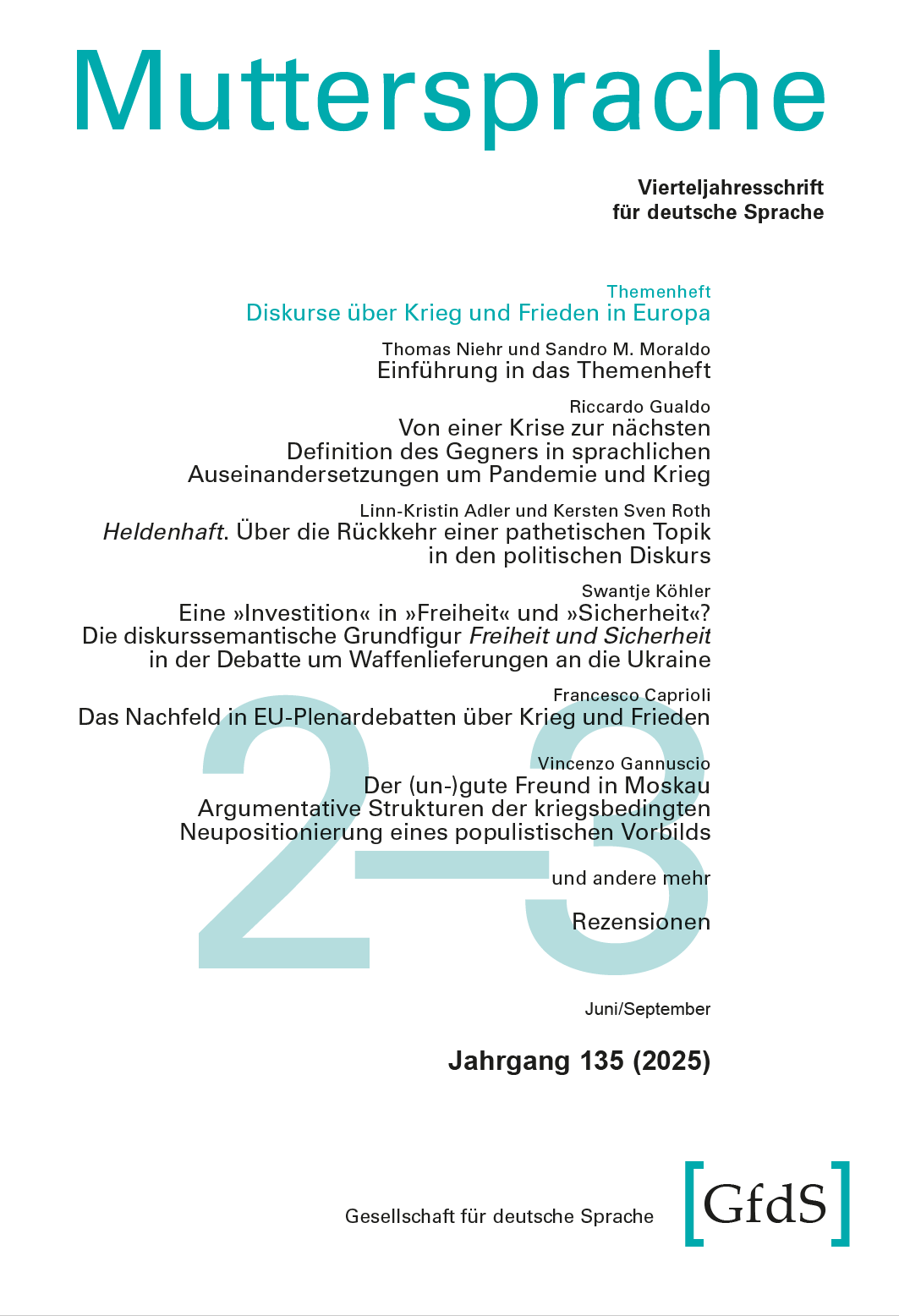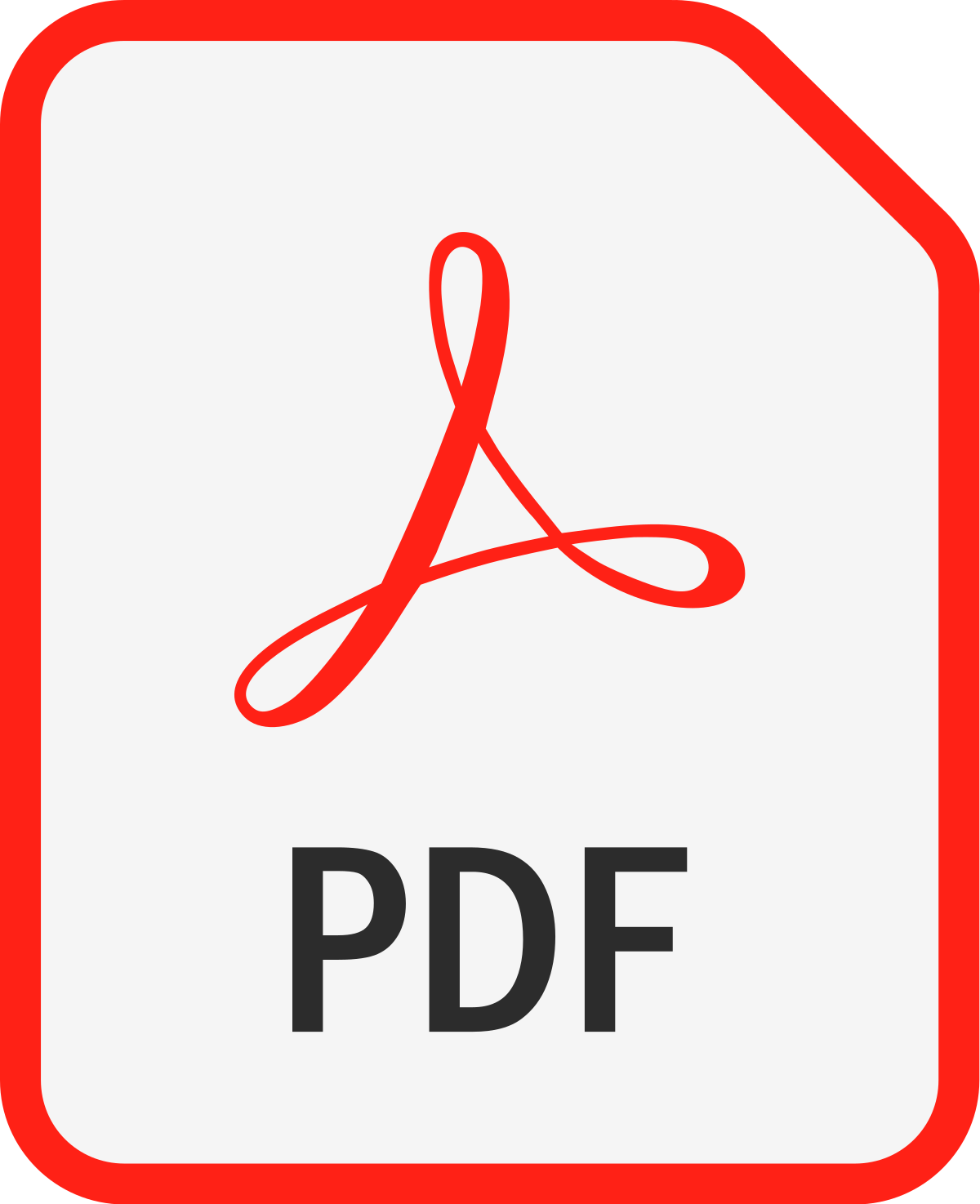Artikeldetails
freier Zugang*Eugenio Verra: Nationalitätsbezeichnungen und Konfliktbezeichnungen im Russland-Ukraine-Konflikt: Eine deutsch-italienische kontrastive linguistische Diskursanalyse (MU)
(Diskurse über Krieg und Frieden in Europa)

Produkttyp: Beitrag (Zeitschrift)
Autor(in): Eugenio Verra
Titel: Nationalitätsbezeichnungen und Konfliktbezeichnungen im Russland-Ukraine-Konflikt: Eine deutsch-italienische kontrastive linguistische Diskursanalyse
Publikation in: Muttersprache, 135. Jahrgang, Heft 2–3
Seiten: 188–216 (29 Seiten)
Erschienen: 15.06.2025
Abstract: siehe unten
URI: https://doi.org/10.53371/61309

Preis: kostenfrei
(Download)
Abstract
Bei der (nicht-)wissenschaftlichen Auseinandersetzung mit dem 2022 angefangenen Russland-Ukraine-Krieg treten unterschiedliche konkurrierende Kombinationen von Nationalitäts- und Konfliktbezeichnungen zur Benennung dieser »Situation« auf, sowohl in Deutschland als auch in Italien. Ziel des vorliegenden Beitrags ist es, die Häufigkeit und Struktur solcher Kombinationen und ihre Semantik zu untersuchen. Theoretisch verortet sich die Untersuchung im Rahmen der kontrastiven linguistischen Diskursanalyse und sie gliedert sich wie folgt: Ausgehend von den deutschen und italienischen Wikipedia-Seiten über die Situation in der Ukraine werden die häufigsten dort genannten Konfliktbezeichnungen und ihre Kombinationen mit Nationalitätsbezeichnungen in den German- und Italian-Trends-Korpora von Sketch Engine im ersten Teil untersucht, im zweiten Teil wird eine explorative Studie der Strukturen Krieg/Konflikt in der Ukraine und guerra/conflitto in Ucraina anhand eines ad hoc erstellten Korpus von deutschen und italienischen Online-Zeitungsbeiträgen durch die Software MAXQDA durchgeführt. Zusammenfassend bestätigt die vorliegende quantitativ-qualitative Untersuchung einerseits, dass die Varianten zur Benennung der Situation in der Ukraine tatsächlich zahlreich sind, und dass ihre Kombination innerhalb spezifischer morphosyntaktischer Strukturen sich auf die gesamte Semantik des Ausdrucks und die damit vermittelte Positionierung auswirkt, andererseits wird durch sie empirisch nachgewiesen, dass die Funktionen von oberflächlich äquivalenten Lexemen und morphosyntaktischen Strukturen je nach Sprache (Deutsch und Italienisch) variieren, obwohl auch einige Ähnlichkeiten hervorzuheben waren.
In the (non-)scientific debate on the conflict between Ukraine and Russia, which began in 2022, different competing combinations of nationality and conflict terms appear, in Germany as well as in Italy. The objective of this paper is to investigate the frequency and structure of those combinations as well as their semantics. The analysis locates itself within the theoretical framework of the contrastive linguistic discourse analysis and it is structured as follows: Based on the German and Italian Wikipedia pages about the situation in Ukraine, the most frequent conflict and nationality terms, that are cited there, are investigated in the German- and Italian-Trends corpora on Sketch Engine in the first part, in the second part, an explorative study of the structures Krieg/Konflikt in der Ukraine and guerra/conflitto in Ucraina is carried out through the software MAXQDA in a corpus of Italian and German online newspaper articles, that was created ad hoc. To sum up, the qualitative-quantitative analysis confirms on the one side that the different variants used to name the situation in Ukraine are in fact many and that their combination in specific morph-syntactic structures affect the overall semantics of the expression and the positioning it conveys, on the other side, it demonstrates empirically that the function of apparently equivalent lexemes and morpho-syntactic structures vary according to the language (German and Italian), though some similarities could be detected as well.
*Open Access gemäß CC BY-NC-ND 4.0.